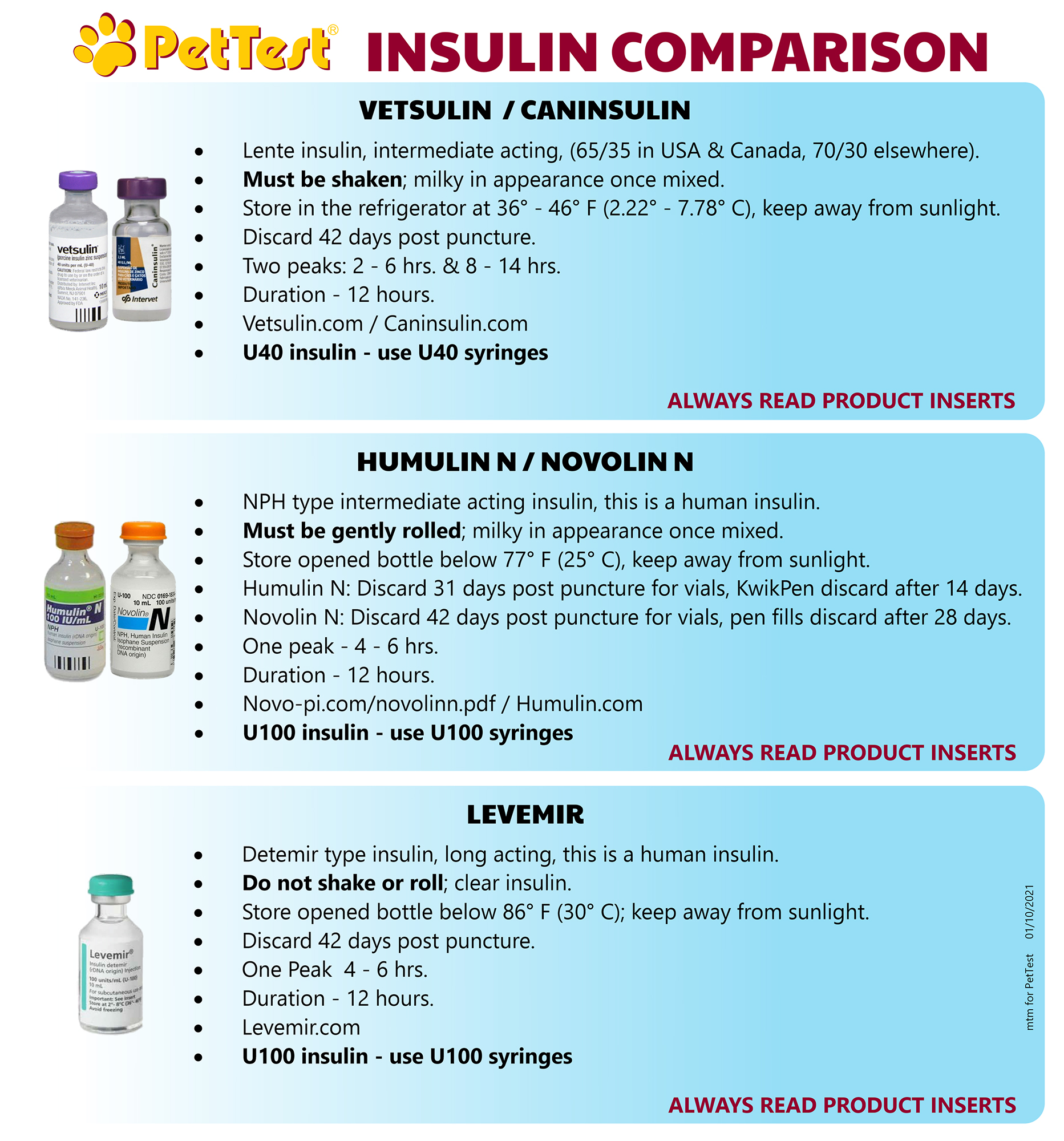Comparing Insulin Types
When Lucy was first diagnosed with diabetes, I had no idea that animals could even get diabetes. Her diagnosis certainly opened my eyes to common illnesses that humans and dogs share. In fact in the group I am in, somebody had a diabetic hamster! Hamsters are so small she had to dilute the insulin for proper dosing, and I could not imagine giving a hamster insulin twice per day.
We get questions all the time regarding different types of insulin that we typically give to our dogs. Today I am going to give some detailed information about the most used insulin and proper handling & administration information.
There are many types of insulin but only a couple that we as caregivers use. The following is a list of all available insulins.
- Rapid – onset is very fast and I have not seen it used in dogs and in vet settings a short/regular acting insulin is used.
- Short/Regular – this can start working within 30 minutes of injecting and can last 4-6 hours. This type of insulin is used in vet settings due to it dropping blood glucose levels quickly. BG levels must be monitored closely while using a regular acting insulin. This insulin is used when BG levels cannot be controlled and levels need to come down quickly, for example, diabetic ketoacidosis, insulin resistance due to hormonal issues. Some of these insulin brands are: Humulin R, Novolin R.
- Intermediate – onset is approximately two hours after injection and lasts for up to 12 hours. This insulin is commonly used in dogs. Insulin brands are: Humulin N, Novolin N, Vetsulin / Caninsulin.
- Long – onset is approximately two hours and can last for 12 hours. This insulin is most used in dogs that have rapid absorption. This type of insulin does not have a peak like regular or intermediate acting insulin, and some dogs that are given this insulin also require a regular type insulin to help with food spikes. Two insulin brands are: Levemir, Lantus.
- Combination – this is a combination of regular acting insulin and intermediate acting insulin. If a human combination insulin is given to a dog, it typically is not the appropriate ratio (too much regular, not enough intermediate acting insulin. There are many combination insulins, but these are the two most common I see mentioned: Humulin 70/30, Novolin 70/30.
I am going to break down three most commonly used insulins so that you have a better understanding of the insulin types that our dogs use.

MPORTANT NOTES FOR VETSULIN / CANINSULIN USERS:
While Vetsulin / Caninsulin is an intermediate acting insulin, the amorphous portion (35% USA, 30% elsewhere) starts working sooner than the crystalline portion (65% USA, 70% elsewhere). There are two peaks due to the amorphous and crystalline insulin.
When Vetsulin / Caninsulin first came out the instructions were to gently roll to mix. Merck Animal Health took it off the market due to stability issues and when it was reintroduced in 2013, instructions were changed to SHAKE THE VIAL THOROUGHLY UNTIL A HOMOGENEOUS, UNIFORMLY MILKY SUSPENSION IS OBTAINED. If you have received information that states it is to be rolled gently, please read the product insert and contact Merck Animal Health. They will contact your vet office anonymously and make sure that the staff is given the proper mixing instructions.
Merck Animal Health Technical Services: 1-800-224-5318
We still see members commenting that they have been instructed to gently roll their Vetsulin / Caninsulin per vet instructions. This is incorrect, there is a reason that the manufacturer states it must be shaken to be mixed properly, please follow manufacturer instructions!
I hope this blog has answered any questions you may have had about the different types of insulin that are available, and the most commonly used types of insulin used for canine diabetes. If you have any questions or comments, please start a conversation below!
If you are looking for a Facebook community to join for support, I have been an admin for Diabetic Dog Owners for four years. You can also join Canine Diabetes Support and Information on Facebook as well.
For more conversations, photos, and giveaways check out PetTest on Facebook and Instagram.

